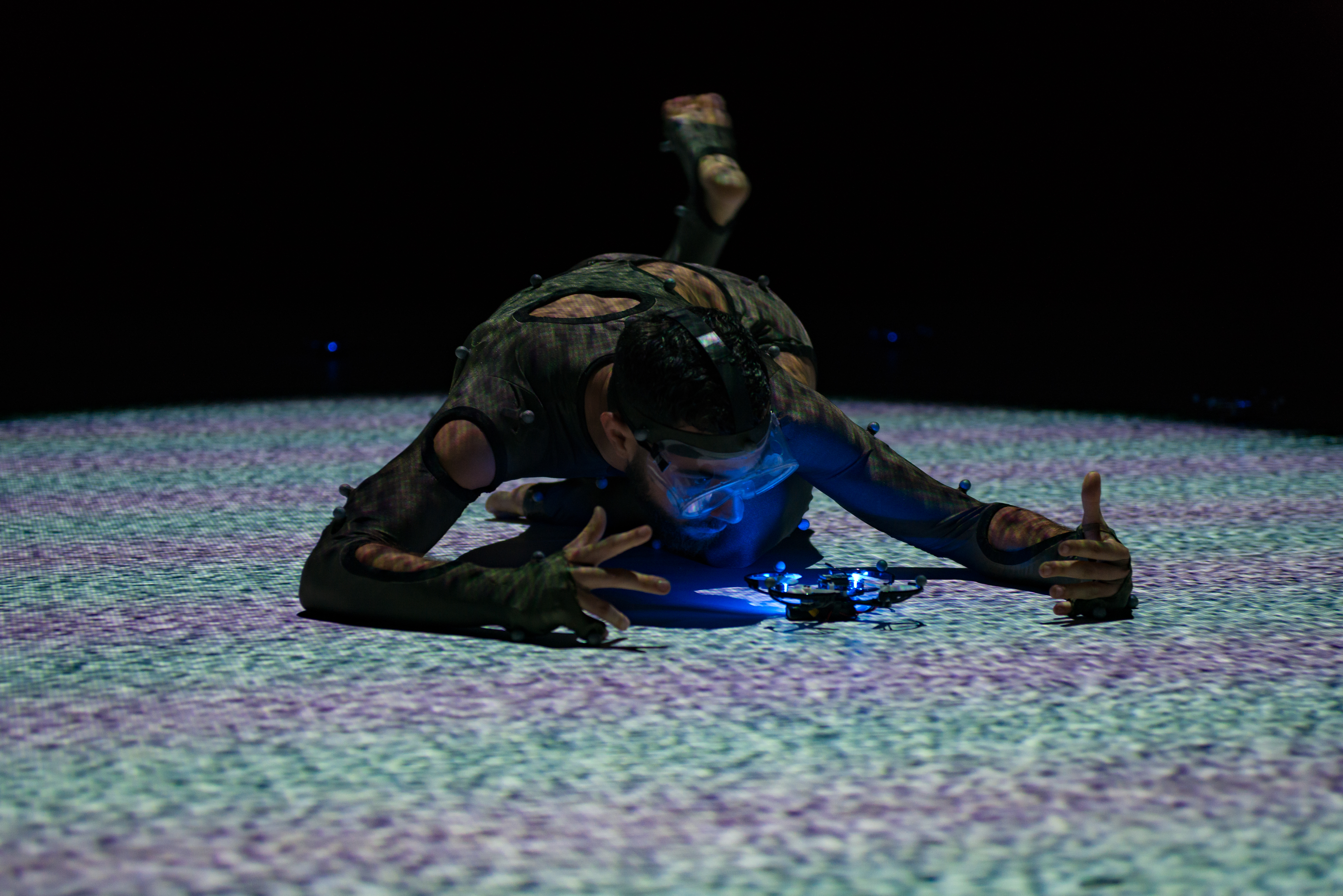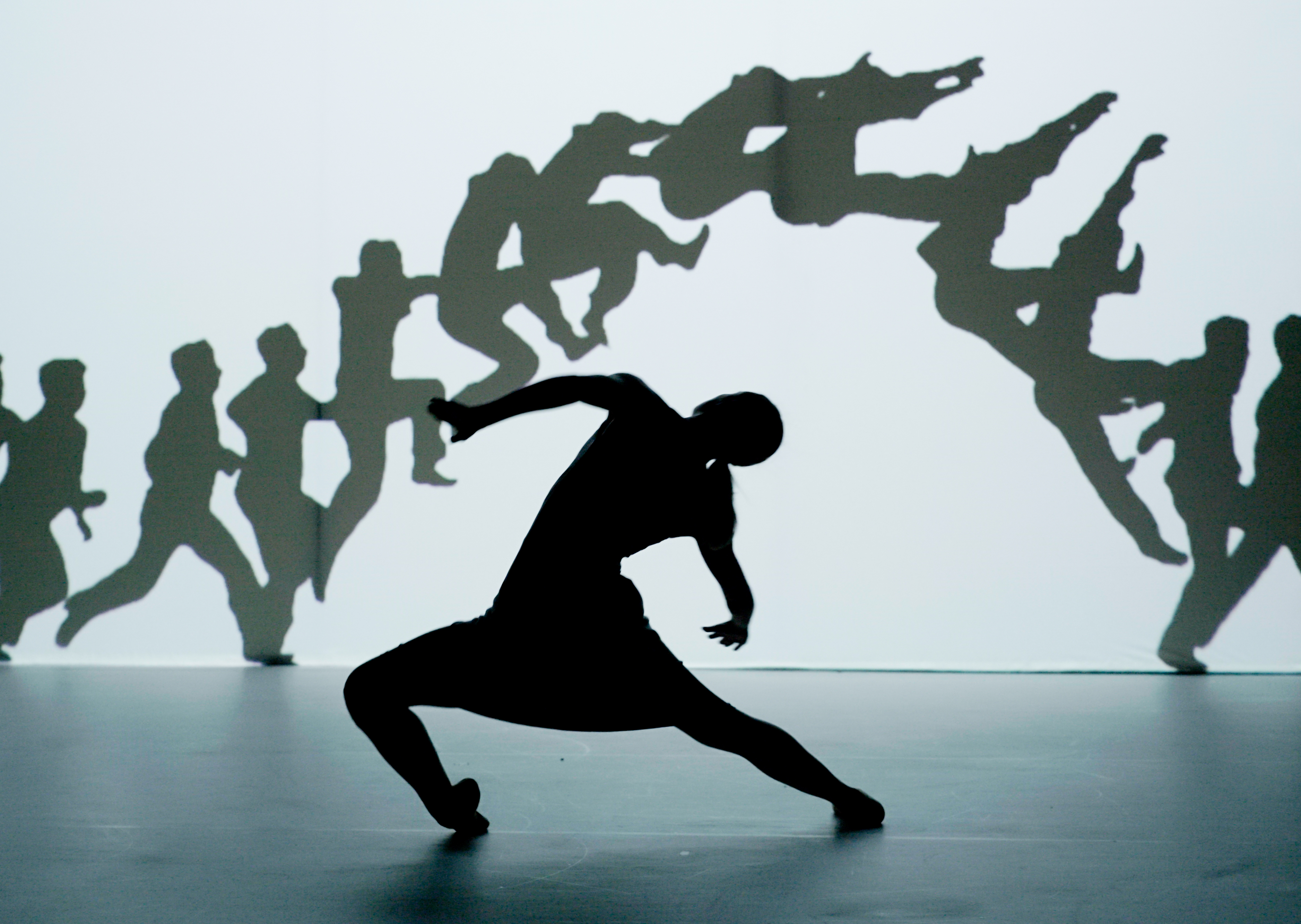Words by Bengi-Sue Sirin.
I’m asking this question off the back of seeing David Middendorp’s company Another Kind of Blue in their Peacock Theatre run of Flirt with Reality. Middendorp writes in the press release: ‘dance and technology come from the same source: man’s desire to create a different reality.’ I don’t disagree. Both harness elements of movement, energy and speed to astound consumers.
However, I find that to be the limit of their overlap. For me, dance showcases things that are beautiful about human consciousness, such as emotion, tone, memory and understanding. These were elements of the dance work that I felt myself consciously dismissing, as a result of the emphasis on technology.
I came across Flirt with Reality by chance. It was the line: ‘Dancers literally collide with digital matter and drones in an imaginative, gravity-defying dreamscape of fantasy and rhythm’ that got me. Drones! On stage! I had to see the show with my own eyes.
My attitude towards technology is best described as awe underscored with a wave of terror towards potential manufacturing oversights that could unleash unknown dystopian disasters. But I think we should use it to enhance reality, not to replace it. For example, I love the app ‘Shazam’ but hate the intrusive Amazon ‘Alexa’.
Drones strike me as particularly susceptible to being weaponised by saboteurs, with their mechanical range of both movement and empathy. So as you can imagine, the chance to see some of these gadgets participating in that intersection of art, emotion, and the human body, was flirting pretty provocatively with me.
The show is split into five choreographies, short to medium in length. As it required the most setting up — with twelve drones to coordinate and an audiences’ worth of phones to set airplane mode to avoid interference — Airman opened the evening.
To begin with, I was transfixed. Anxious, avian arcs followed the directive dancing of the soloist, in obedient, oviform oscillations. However, it was hard to respond to the drones as purveyors of anything emotional. At no point was it possible to disregard their reliance on the controllers in the curtains; ergo, the controllers’ reliance on the gentle leading movements of the soloist.

The dancer himself was as pleasant as he was present, halfway between necessary and obsolete. For me, his importance was peripheral to the drones. Airman stages a representation of the hierarchical complexities posed by technology. We enable it (from offstage); it tentatively lifts, then begins to enable us (to dance in new ways, on new planes); delighted by the creation of a different reality, we cease to function independently of it (limiting our different reality to only one which involves the technology); and thereby curbing our human consciousness (we watch only for the drones’ responses to the dancer, not the dancer’s response to the drone). It’s a pretty nifty way of showing how we choreograph the gradation of our human consciousness, when we normalise the use of new technology.
On a less philosophical note, our expectation becomes less tolerant and more machinistic when we interact with new technological realities. I found myself quick to assess the segments of drone-dancing as not very engaging, once they had gone on for a couple of rounds. My eyes wanted to see the exciting new technology pushed to its limit, not repetition!
Some of my fondest memories are of long stretches of repeated motifs, in unison, canon and even retrograde, washing the expressive potential of the human body over my mind. There is beauty in repetition. Dance and music shows are often referred to as ‘recitals,’ acknowledging the centrality of nailing something over and over again.
However, my experience of Airman highlights dance’s greatest loss as an art form in the technological age. There is an insatiable appetite for harder, better, faster, stronger. Airman concludes with what can only be described as physical encircling, painting a visual metaphor for how technology encircles and encloses our human consciousness. And before we know it, we are trapped by it.
I have saved for the end the tiny, human triumph that one of those twelve drones fell and crashed to the floor shortly before the piece ended. I am not sure whether this was Middendorp making a point about the “futility of drones”, or simply the futility of drones, but I am so pleased it happened. Human dancers > drone dancers.
Main image: David Middendorp.
